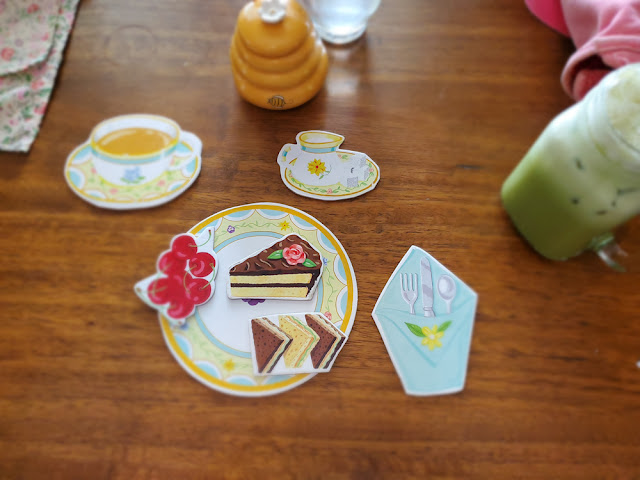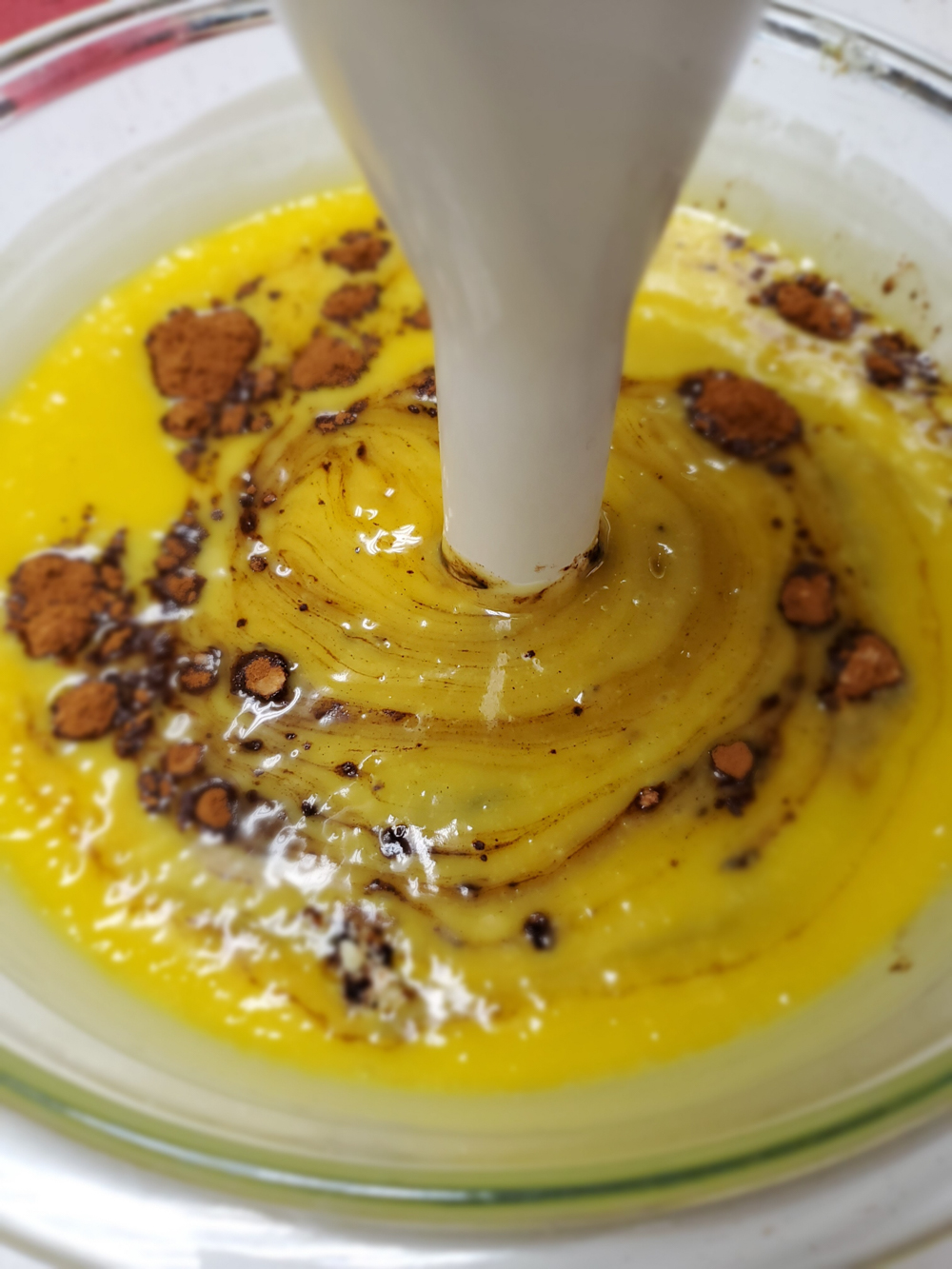
The funnest part of homeschooling is... making things fun, I guess? At least, my favorite part is having an idea for something super educational that I think the kids will like, then doing it and finding out that it IS super educational, and the kids love it!
It is such with Poetry Tea.
Studying poetry doesn't have to be a chore, and to be honest, I think most homeschoolers probably use this Brave Writer invention to make it super fun. As with most homeschooling topics, though, most of the cute tips and tricks and ideas are geared towards younger learners. I'm living proof, though, that Poetry Tea is also an excellent way to incorporate poetry into a high school curriculum!
In anticipation of Poetry Tea, I ask both the kids to choose a poem that they will read aloud, and to let me know its title and author. Once upon a time, I had high hopes of the kids flipping through the several poetry anthology books that I have in the house, but what they actually do is just hit up the Poetry Foundation website. Or choose something random by Shel Silverstein.
After the kids have told me their poetry picks, I research until I've got a low-key sort of lesson plan that I can sneakily tack onto one of their poems. For our September Poetry Tea, for instance, the younger teenager chose a Shel Silverstein poem (of course), but the older teenager chose a William Blake poem (probably because it's short. Brevity is a uniting theme in all their poem choices...).
I can work with William Blake!
The older teenager's poem was "Ah! Sun-Flower." I found an analytical breakdown of the poem to walk through with the kids, including an explanation of the poem's structure and form and a list, with definitions, of all the literary devices used in the poem. All those key terms become spelling/vocabulary words for them to memorize afterwards.
I also read through this William Blake biography so I could pull out things the kids would find interesting (visions of God! An obsession with Gothic art!), and so we could discuss how his background and experiences might have informed the choices that he made as an artist and a writer. I know that authorial intent isn't exactly the most highly approved method of literary analysis, but I was a Medievalist in grad school, and dang if we weren't all about looky-looing into how the background and experiences of those long-ago writers informed the choices they made!
And happily, one of the cool things about William Blake is that he WAS a writer AND an artist, so I could also sneak in some art history and art analysis. Blake even illustrated his own poetry--including "Ah! Sun-Flower"!
The illustrations don't add a ton to one's understanding of the poem, but you can still discuss his technique, use of color, workflow, etc.
I printed color copies of the above Blake facsimile, and the two below, so we could examine them during our Tea:
I also planned out a reading of "London" as MY poem, and an analysis of it that would place it into conversation with "Ah! Sun-Flower."
To be honest, though, all of the fun, for the kids, of Poetry Tea is the adventure of trying out a different tea shop each time. The kids enjoy trying different teas, and there's always some kind of tasty snack that I can treat them to, and, you know, there's always some kind of hijinks or haphazard chaos that ensues. This particular Tea's hijinks included, but were not limited to, the following:
- The younger teenager drove there and the older teenager drove back, both on their pretty new learner's permits. We encountered a small driveway! And a small parking lot! And a narrow parking space that needed backing out of! And about forty roundabouts!
- The food and the drinks at this particular tea shop were terrible. TERRIBLE! Nobody but the older teenager liked anything they got, and just between us, that's only because the older teenager is about as picky as a goat. My matcha tea was powdery, and the younger teenager's scone was basically, like... also powdery? I want to scrape off my tongue just thinking about it, shudder.
- The place did, however, have an awesome selection of board games, and we played several rousing rounds of this very fun children's tea party game (ooh, I think it's this one!)--

--before I could even remotely consider redirecting them to the poetry that was the actual purpose of our visit.
I usually give the kids an assignment or two to complete afterwards; after this Poetry Tea, they got their list of literary and structural terms to memorize, and they each had to choose a different William Blake poem and write me an analytical essay about it.
We usually spend about an hour goofing off, drinking tea, and reading and discussing poetry. The actual poetry reading and discussion is probably less than half that, but considering how much you can get done with a 1:2 teacher:student ratio, that's probably more than you'd reasonably be able to cover in a week of public high school classes. I mean, consider how each student researched and selected a poem to read aloud; read aloud their poem; discussed every poem as a group, listened to a brief lecture on the biography of William Blake; discussed that biography, with special attention to building context between other current and former areas of interest; analyzed two poems line-by-line; listened to, discussed, and analyzed line-by-line the teacher's choice of poem; compared/contrasted two William Blake poems; viewed, critiqued, discussed, and analyzed the author's illustrations of his poems, and received, discussed, and had the opportunity to ask questions about their next assignment. And that's not even including all the soft skills of driver's ed, tea shop etiquette, carrying on an interesting and polite conversation, and trying new food/drinks.
It happened that I was finishing up the course descriptions section of the older teenager's transcript around this time, so I popped William Blake into her course resources for Honors English 12:
Because I don't usually write myself a syllabus or firm lesson plans for these Poetry Teas, it's super important to put the poems we covered into the kids' resource list soon afterwards, or I'm likely to forget that we ever did it, and there is NOTHING that we do for high school that I don't put onto the kids' transcripts somewhere!
Teenagers march on their stomachs, but if you've got younger learners, you probably want some more hands-on and engaging resources to make Poetry Tea fun. Here are some options!
- Poetry prompts are fun for all ages--even adults!
- Poetry journal. This is another clever idea for all ages. It would be fun to have kids write or even just paste each poem into the journal to create their own anthology.
- Copywork. My kids really liked copywork before they realized that it was, ahem, work. This could go well with a short poem in its entirety, or maybe just a rhyming couplet or special stanza of a longer poem.
- Response activities. Tangled poems, reassembled poems, and after poems!
- Art projects. Illustrations, collages, and ripped poetry are fun and artistic responses.
- Song and poem pairings. I LOVE having the kids listen to music on various themes, and I love this idea to pair selected songs and poems.
- Shel Silverstein resources. In case you, too, end up reading a Shel Silverstein poem every month!
- Block building. This would be awesome fun for the super young kid, and I don't think you need to confine yourself only to Humpty Dumpty, either. All poems are fun to knock down!
- Memorization. Some kids find this really fun, and it's a good way to build up their stamina for memorizing information.
And here are some of our favorite poetry resources:
P.S. Want to follow along with my craft projects, books I'm reading, dog-walking mishaps, encounters with Chainsaw Helicopters, and other various adventures on the daily? Find me on my Craft Knife Facebook page!






























